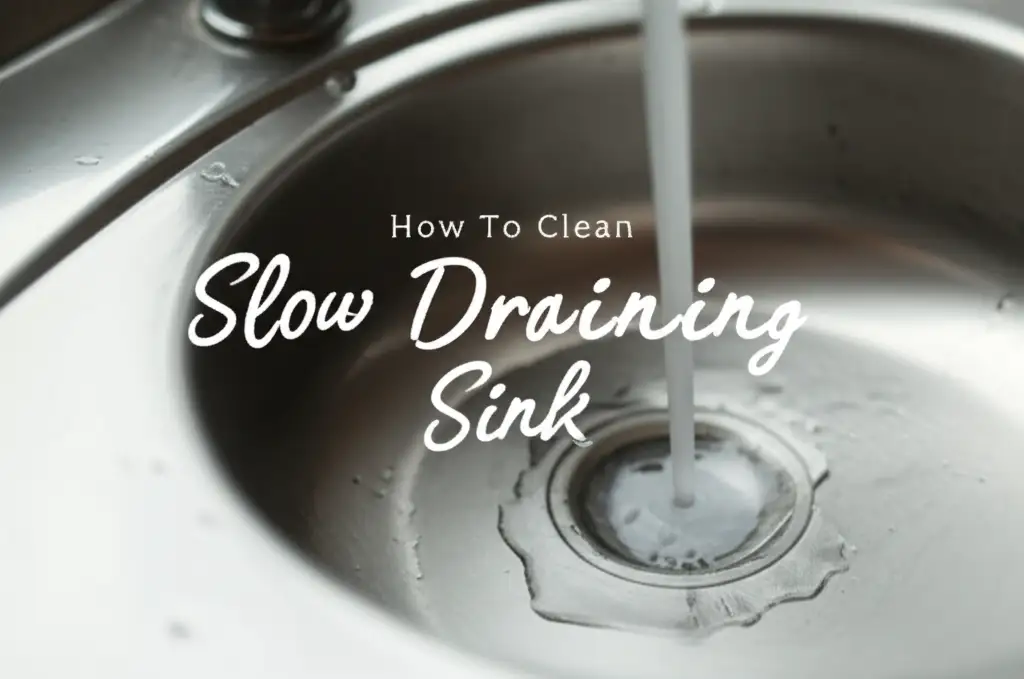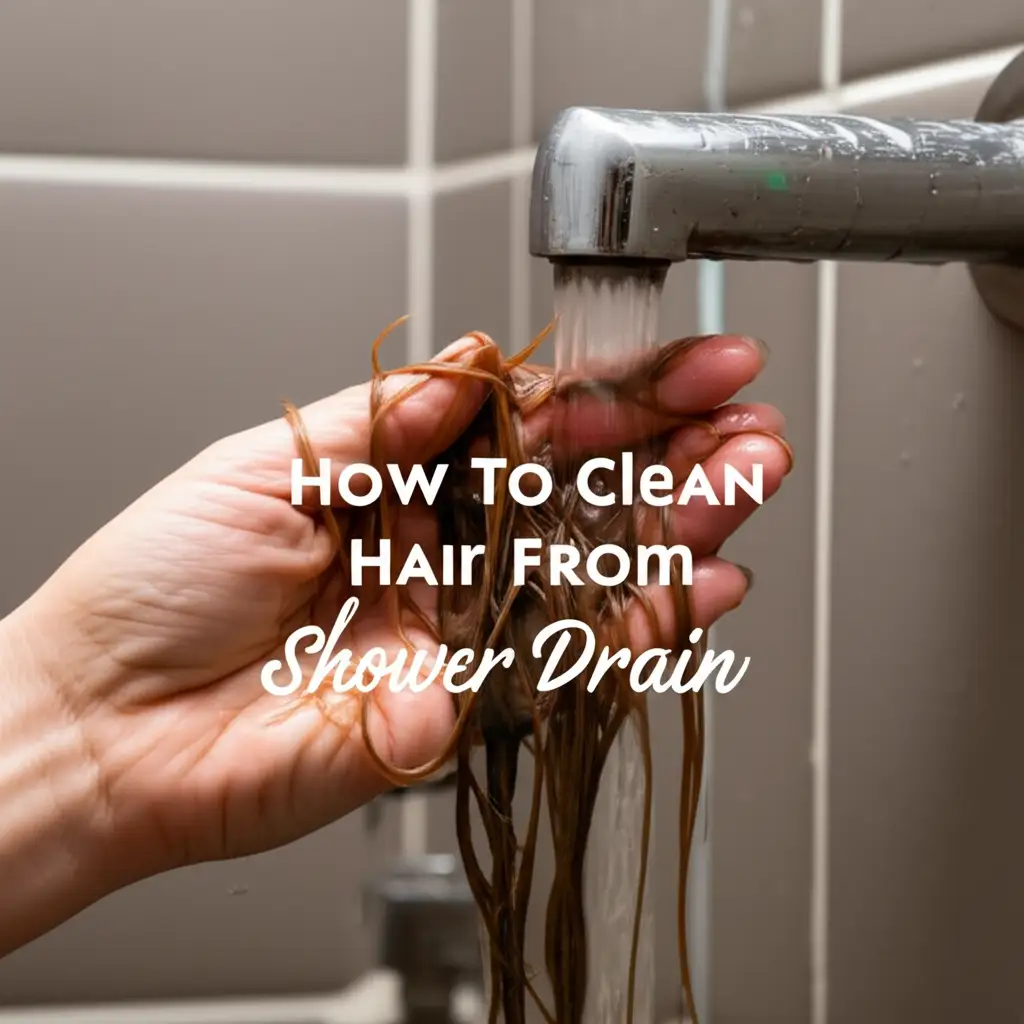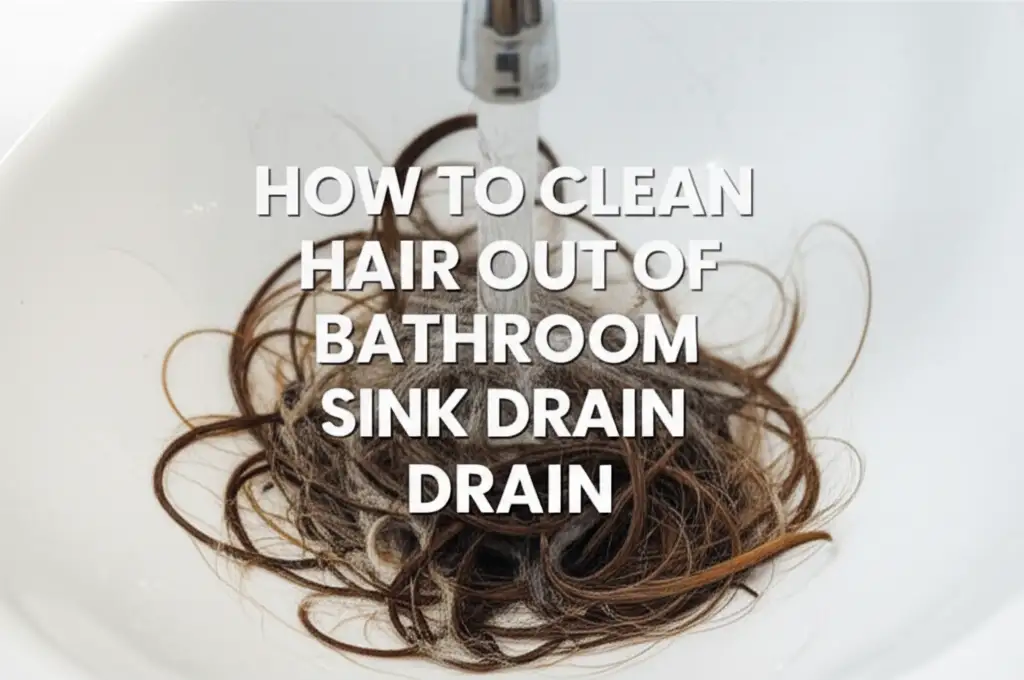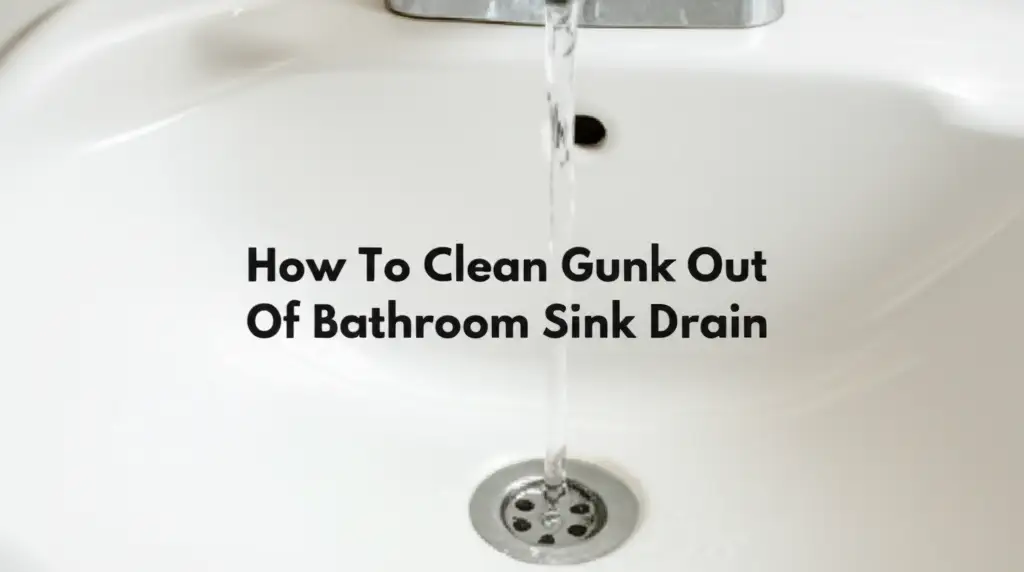· Home Maintenance · 18 min read
How To Clean Slow Draining Sink

Restore Your Sink’s Flow: How to Clean Slow Draining Sink
A slow draining sink is a frustrating problem in any home. Water backs up, dishes pile high, and odors can begin to appear. This common issue stops your daily tasks. Knowing how to clean slow draining sink problems saves time and money. I understand the annoyance this creates for you.
This guide helps you fix a slow drain. We will look at why drains slow down. You will learn simple DIY methods for clearing clogs. We will cover basic tools that help. You will also find out when to call a plumber. Get ready to make your sink drain smoothly again.
Takeaway
- Identify the clog cause: hair, grease, or minerals.
- Start with simple DIY solutions like boiling water or baking soda and vinegar.
- Use mechanical tools such as plungers or drain snakes for tough clogs.
- Understand when professional help is needed for serious issues.
- Prevent future clogs with regular maintenance and drain screens.
Clear Your Drain Effectively
To clean a slow draining sink, you must remove the blockage. Start with boiling water or a baking soda and vinegar solution. For tougher clogs, use a plunger or a drain snake. Always take safety steps when using any method.
Understanding the Slow Drain: Common Causes
A slow drain does not happen without reason. Something blocks the water flow. Knowing the cause helps you choose the right cleaning method. I find that most slow drains share a few common culprits. You can often see clues about the blockage.
In kitchens, grease and food are common problems. In bathrooms, hair and soap scum cause issues. Mineral buildup from hard water can also narrow pipes. Sometimes, a P-trap collects debris. We must identify what fills your pipe.
Hair and Soap Scum Buildup
Bathroom sinks often collect hair. Hair wraps around the drain stopper. It mixes with soap scum, forming a sticky mass. This mass traps more debris. Over time, this buildup significantly slows water. You might see a black, slimy substance. Removing this sticky gunk helps a lot. It is a common problem in showers too.
This type of clog feels spongy. It stops water from moving fast. Regular cleaning can prevent this buildup. I always check my bathroom drains for hair. This simple check saves time later.
Grease and Food Particles
Kitchen sinks deal with food and grease. Pouring hot grease down the drain seems harmless. But grease cools and hardens inside pipes. It sticks to pipe walls. Food particles also get stuck. These layers build up and shrink the pipe opening. This makes your kitchen sink drain slow.
This kind of clog is often sticky and stubborn. It might also smell bad. We need to cut through this grease. Hot water alone is not enough for large amounts.
Mineral Buildup from Hard Water
Hard water contains high levels of minerals. These minerals include calcium and magnesium. Over time, these minerals deposit inside pipes. This creates a hard, rough coating. This coating narrows the pipe diameter. Water flow slows down. Mineral buildup is hard to remove.
You may not see this problem. But if you have hard water, it is a likely cause. This type of clog is less common for sudden stops. It usually causes a drain to get slower over many months.
Other Less Common Causes
Sometimes, something else causes a slow drain. A foreign object might fall into the drain. Children’s toys or small items can get stuck. Tree roots can grow into outdoor sewer lines. This is rare for a sink drain. But it can affect your entire home’s drainage. An old or poorly installed pipe might also drain slowly. These cases usually need a professional.
Safe DIY Methods for Slow Drains
When your sink starts to drain slowly, do not panic. Many times, you can fix it yourself. I always start with simple, safe methods. These do not use harsh chemicals. They are good for your pipes and the environment. These methods work best for minor clogs. They can also help with small blockages.
Try these simple steps first. They often clear the problem quickly. Always remove any visible debris from the drain opening before you start. This helps the water or solution reach the clog better.
Boiling Water Flush
Boiling water is a very simple first step. It works well for grease clogs in the kitchen. It also helps with soap scum in the bathroom. The hot water melts grease and loosens other buildup.
Boil a large pot of water. Pour it slowly down the drain. Do this in two or three stages. Allow a few minutes between pours. This gives the hot water time to work. Be careful not to splash yourself. This method is not safe for PVC pipes if the water is too hot, or if you have old, weak pipes. Use very hot tap water instead if you are unsure. Boiling water is very effective for minor clogs. It helps clear the path for better drainage.
Baking Soda and Vinegar Solution
This method creates a fizzy reaction. This reaction helps break down clogs. It is safe for most pipes. It also helps remove bad smells. I use this method often.
First, pour one cup of baking soda down the drain. Follow it with one cup of white vinegar. You will hear fizzing. Cover the drain with a stopper or a plate. Let it sit for 30 minutes to one hour. The fizzing action works on the clog. After waiting, flush the drain with hot water. This helps push the loosened debris away. This mix helps with grease and soap scum. It is a gentle yet powerful cleaner for your drain. You can learn more about this method to clean your sink drain with vinegar.
Salt and Hot Water
Salt can also help break down minor clogs. It works by scrubbing the pipe walls. This method is very gentle. It is good for light grease buildup. It also helps with light soap scum.
Pour half a cup of salt down the drain. Follow with about two cups of very hot tap water. Let it sit for 15-20 minutes. The salt helps scrape away gunk. The hot water melts it. Then, flush the drain with more hot water. This method is simple. It uses common household items. It can be a good first step for slow drains.
Dish Soap and Hot Water
This method is good for kitchen sinks. Dish soap cuts through grease. It can help loosen small grease clogs. It is very safe for your pipes. You likely have dish soap already.
Pour a quarter cup of liquid dish soap down the drain. Follow it with a few cups of very hot tap water. Let it sit for 20-30 minutes. The soap acts as a lubricant. It helps the hot water carry grease away. After waiting, flush with more hot water. This can help clear small blockages. It is a simple trick to try first. This method works well for very recent grease clogs.
When to Use Chemical Drain Cleaners (and Cautions)
Chemical drain cleaners can seem like a quick fix. They use strong chemicals to dissolve clogs. However, I use them with great caution. They are not always the best choice. They can harm your pipes. They also pose health risks. Use them as a last resort for DIY.
Always read the product label carefully. Understand the dangers. Never mix different chemical cleaners. This can create toxic fumes. Protect your skin and eyes.
Types of Chemical Cleaners
Chemical drain cleaners work in different ways. Some are caustic. They contain lye or sulfuric acid. These generate heat. They can dissolve hair and grease. Others are oxidizing. They contain bleach or peroxides. They cause a chemical reaction. Enzymatic cleaners are safer. They use bacteria to eat organic matter. They work slowly. They are best for maintenance.
Caustic and oxidizing cleaners are strong. They work fast on some clogs. But they can also corrode old pipes. They can damage rubber seals. Enzymatic cleaners are much milder. They are safer for pipes. They are not for immediate, tough clogs.
Safety Precautions are Key
Chemical drain cleaners are dangerous. They can cause burns to skin and eyes. Their fumes can harm your lungs. Always wear rubber gloves and eye protection. Make sure the area is well-ventilated. Open windows or use a fan. Never breathe the fumes directly. Keep children and pets away from the area.
Do not use these cleaners in standing water. The chemicals will sit in the sink. This creates a splash risk. Follow the instructions exactly. Do not leave the cleaner in pipes longer than advised. This can cause damage. Using them properly reduces risks.
Limitations and Risks
Chemical cleaners do not work on all clogs. They are bad for solid objects. They often fail against mineral buildup. If the chemical does not clear the clog, it sits in your pipes. This makes it harder for a plumber to work safely. The chemical can splash out. It can also cause further pipe damage. Repeated use weakens pipes. This leads to costly repairs later.
Consider the risks versus the benefits. Many plumbers advise against chemical cleaners. They prefer mechanical methods. They are safer for your home’s plumbing system. For a clogged kitchen sink, I typically avoid chemicals first.
Mechanical Cleaning Tools for Tough Clogs
Sometimes, DIY solutions are not enough. The clog might be too big or too far down. That is when mechanical tools become useful. These tools physically break apart or pull out the clog. They are often more effective than chemicals. I recommend having these tools on hand for serious clogs. They are a good investment for any homeowner.
Using these tools requires a bit of effort. But they often fix the problem for good. Always follow safety steps. Wear gloves if needed.
The Plunger Method
A plunger creates suction. This suction can dislodge clogs. It works best on sinks without an overflow hole. If your sink has an overflow, block it with a wet cloth. This helps build stronger suction.
Place the plunger cup over the drain opening. Make sure it creates a tight seal. Fill the sink with enough water to cover the plunger cup. Push the plunger down firmly. Then pull it up sharply. Repeat this action 15-20 times. On the last pull, remove the plunger quickly. Water should rush down. If it drains slowly, repeat the process. This method often works for hair and food clogs. It is a classic first step for tougher blockages.
Drain Snake (Auger) Use
A drain snake, or auger, is a flexible coil of wire. It can reach deep into pipes. It physically breaks up or retrieves clogs. You can rent or buy a hand-cranked snake.
Feed the snake into the drain opening. Turn the handle as you push it down. You will feel resistance when it hits the clog. Continue turning the handle. This helps the snake head chew through the blockage. If you feel it grab, pull the snake back slowly. You might pull out the clog. If not, push and turn again. Flush with hot water after use. This tool is effective for hair clogs. It is a good way to clean hair out of a bathroom sink drain. Always wear gloves when handling the snake. It can get dirty.
Cleaning the P-Trap
The P-trap is the U-shaped pipe under your sink. It holds water. This water prevents sewer gases from entering your home. It is also a common place for clogs. Hair, grease, and small objects gather here. Cleaning the P-trap requires simple tools.
You will need a bucket and a wrench. Place the bucket under the P-trap to catch water. Use the wrench to loosen the slip nuts on both ends of the P-trap. Remove the P-trap. Empty its contents into the bucket. Use an old toothbrush or a stiff wire to clean the inside. Rinse the P-trap thoroughly. Reattach it firmly. Test for leaks. This method is very effective for bathroom sinks. It directly removes the source of many clogs. This is often necessary when you see black stuff in the sink drain. Also check for signs of mold under the sink while the trap is open.
Addressing Specific Slow Drain Issues (Kitchen vs. Bathroom)
Slow drains in the kitchen and bathroom often have different causes. Kitchen sinks mostly deal with food and grease. Bathroom sinks mainly clog with hair and soap scum. Tailoring your approach makes cleaning more effective. I always consider the sink’s location first. This helps me choose the best method.
Understanding the typical clogs for each type of sink saves time. It helps you pick the right tools. It also guides your prevention efforts. A good strategy starts with good information.
Kitchen Sink Solutions
Kitchen sinks handle a lot of food waste. Grease, coffee grounds, and food particles are common culprits. For grease clogs, very hot water is useful. Boiling water can melt it. You can also try dish soap and hot water. This helps break down the grease.
Avoid pouring grease down the drain. Scrape plates into the trash can. Use a drain screen to catch food scraps. If you have a garbage disposal, run cold water while using it. This helps flush food particles. These steps stop grease from building up. For tougher kitchen clogs, a plunger or a drain snake might be needed. These tools work well on built-up food and grease.
Bathroom Sink Solutions
Bathroom sinks often collect hair, dental floss, and soap scum. Hair wraps around the drain stopper. Soap scum then sticks to the hair. This forms a hard blockage. For hair clogs, manual removal is often best.
Remove the drain stopper first. Use tweezers or pliers to pull out visible hair. A drain snake is very effective for hair. It hooks onto the hair and pulls it out. Boiling water can help with soap scum. Baking soda and vinegar also work well on this type of buildup. Regular cleaning of the drain stopper helps prevent hair from going down the drain. This proactive step saves a lot of trouble later. If you have gunk out of bathroom sink drain, these are the best methods.
Preventing Future Slow Drains: Best Practices
Fixing a slow drain is good. Preventing it from happening again is even better. Regular maintenance keeps your pipes clear. It avoids the hassle of clogs. I believe that prevention is the most important step. It saves money on repairs. It also extends the life of your plumbing system.
Small habits can make a big difference. Think about what goes down your drain. A little effort now prevents big problems later. These tips help you maintain clear drains for a long time.
Drain Screens and Filters
Drain screens are simple tools. They sit over your drain opening. They catch hair, food particles, and other debris. This stops these items from entering your pipes. They are cheap and easy to install.
Use a screen in your kitchen sink to catch food scraps. Place one in your bathroom sink to catch hair. Clean these screens regularly. Just rinse them off and put them back. This small step stops most common clogs. It is the easiest way to prevent a slow drain.
Regular Flushing and Maintenance
Regular flushing helps keep pipes clear. Pouring hot water down the drain weekly can help. This flushes away small amounts of grease and soap scum. It stops buildup before it becomes a problem.
For maintenance, use baking soda and vinegar once a month. Pour half a cup of baking soda down the drain. Follow with half a cup of vinegar. Let it sit for 30 minutes. Then flush with hot water. This gentle cleaning helps prevent clogs. It keeps your pipes fresh. This proactive step helps keep your plumbing healthy.
Proper Waste Disposal
Think before you pour or dispose. Do not pour cooking grease down any drain. Let it cool and harden. Then scrape it into the trash can. Avoid putting coffee grounds or large food scraps in the kitchen sink. Use your garbage disposal wisely. Run cold water while using it. Flush for a few seconds after grinding.
In the bathroom, avoid flushing dental floss, cotton balls, or paper towels. These items do not break down in water. They cause severe clogs. Always use a trash can for these items. Proper waste disposal is a key part of drain health. It prevents most clogs from forming.
Professional Help: When to Call a Plumber
Most slow drains can be fixed with DIY methods. However, some problems are too big for a homeowner. Knowing when to call a professional plumber saves time and prevents further damage. I know it can be tempting to keep trying. But sometimes, it is best to get expert help.
A plumber has specialized tools and knowledge. They can diagnose complex issues. They can safely fix problems you cannot. Do not wait until the problem becomes a crisis.
Recurring Clogs
You might clear a clog. But it returns a few weeks later. This is a sign of a bigger problem. A recurring clog means your DIY fix was only temporary. There might be a deep blockage. Or your pipes might have issues.
A plumber can use a camera to inspect pipes. They can see what causes the constant clogging. This helps them fix the root cause. Do not keep trying the same fixes if the problem comes back.
Multiple Slow Drains
If more than one drain in your home is slow, you have a larger issue. For example, if your kitchen sink and a bathroom sink drain slowly. This suggests a problem in the main sewer line. It is not just one isolated pipe.
A main line clog can affect all your drains. This requires professional attention. A plumber can use heavy-duty augers. They can also hydro-jet the main line. This clears the system.
Standing Water or Foul Odors
Standing water in your sink is a clear sign of a full blockage. Water does not move at all. This means a very large or stubborn clog. Chemical cleaners might not work. They can also create hazards.
Foul odors that do not go away also signal a problem. This might mean decaying organic matter in the pipes. Or it could be sewer gas escaping. This needs proper clearing and ventilation. If these symptoms appear, call a plumber. They can diagnose and fix these issues safely.
Suspected Pipe Damage
Sometimes, a slow drain comes from pipe damage. This could be a cracked pipe. It could be a collapsed section. Tree roots can also grow into pipes. These issues are outside your ability to fix.
A plumber can use video inspection. They can pinpoint pipe damage. They can then recommend the right repair. Do not attempt to fix damaged pipes yourself. This requires professional skills. It often involves excavation or complex repair methods.
FAQ Section
How often should I clean my sink drain?
You should clean your sink drain regularly to prevent clogs. For general maintenance, use a baking soda and vinegar flush once a month. This helps remove minor buildup. If you notice it draining slowly, clean it right away. Using drain screens helps reduce the need for frequent deep cleaning.
Can a slow drain harm my pipes?
Yes, a slow drain can harm your pipes over time. Standing water puts constant pressure on pipe joints. The clog itself can cause corrosion if it contains harsh chemicals or acids. Persistent clogs can also lead to bursting pipes. Addressing a slow drain quickly protects your plumbing system.
Is baking soda and vinegar safe for all pipes?
Baking soda and vinegar are generally safe for all types of pipes. This includes PVC, copper, and cast iron. Their reaction creates a mild acid and gas. This is not strong enough to harm pipes. It helps break down organic matter safely. This is a much safer alternative to harsh chemical drain cleaners.
What if my slow drain smells bad?
A slow drain that smells bad usually means organic matter is decaying inside. This includes food, grease, or hair. Use baking soda and vinegar. Let it sit overnight if the smell is strong. Follow with a hot water flush. Regularly cleaning your drain stopper and overflow can also help reduce odors.
Can boiling water damage PVC pipes?
Yes, very hot boiling water can potentially damage PVC pipes. PVC can soften or warp at high temperatures. It is safer to use very hot tap water instead of freshly boiled water. This is especially true for older PVC pipes. For metal pipes, boiling water is generally safe.
Why is my drain slow after I just cleaned it?
If your drain is still slow after cleaning, the clog might be deeper. Your method might not have reached it. Or the clog is larger than expected. It could also mean the pipe has internal damage or mineral buildup. You may need a stronger mechanical tool like a drain snake. Or you might need to call a plumber.
Conclusion
A slow draining sink is a common household annoyance. But it does not have to be a major problem. You now know how to clean slow draining sink problems effectively. We covered many methods, from simple home remedies to mechanical tools. You understand the different causes of clogs in your kitchen and bathroom. You also learned how to prevent future issues.
Start with easy DIY fixes. Use baking soda and vinegar. Consider mechanical tools like a plunger or drain snake for tougher blockages. Remember to always
- slow drain
- sink cleaning
- drain unclogging
- DIY plumbing
- home remedies




